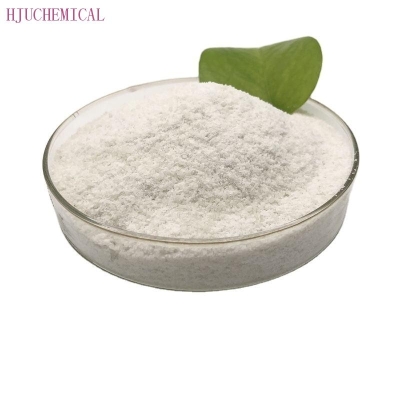-
Categories
-
Pharmaceutical Intermediates
-
Active Pharmaceutical Ingredients
-
Food Additives
- Industrial Coatings
- Agrochemicals
- Dyes and Pigments
- Surfactant
- Flavors and Fragrances
- Chemical Reagents
- Catalyst and Auxiliary
- Natural Products
- Inorganic Chemistry
-
Organic Chemistry
-
Biochemical Engineering
- Analytical Chemistry
- Cosmetic Ingredient
-
Pharmaceutical Intermediates
Promotion
ECHEMI Mall
Wholesale
Weekly Price
Exhibition
News
-
Trade Service
Hydrogel is a kind of three-dimensional network structure polymer intelligent material with hydrophilic groups, which can swell rapidly in water and can maintain a large volume of water without dissolving in the swollen state
.
Because of its good biocompatibility and the similarity of biological systems, hydrogels are widely used in wound dressings, contact lenses and other daily life, as well as tissue engineering, soft robotics and other cutting-edge research
.
However, since hydrogels are rich in hydrophilic groups, they are inherently hydrophilic and generally not hydrophobic, so there is basically no pure hydrogel material with hydrophobic characteristics
.
? On April 14, the research group of Professor Mei Yongfeng from the Department of Materials Science of Fudan University published a titled "Self-powered locomotion of bionic water strider" in "Science Robotics" (Science Robotics).
a hydrogel water strider”) research work
.
Doctoral student Zhu Hong is the first author, and Mei Yongfeng is the corresponding author.
This work is strongly supported by the shared instrument platform of the Department of Polymer Science of Fudan University and the State Key Laboratory of Polymer Molecular Engineering
.
Starting from "0", the research team originally synthesized a new type of hydrogel smart material with dynamic hydrophobic characteristics
.
The hydrogel can be self-driven on the water surface without additional energy supply; the active hydrogel stops moving after saturation and absorption of water, and the drying treatment can restore vitality, again realizing self-driven rapid water surface movement
.
?? Figure 1.
A photo of the water strider moving on the water surface (A), a schematic diagram of the movement mechanism (the lower left corner of the figure A) and its movement rate and displacement over time (B); the active hydrogel water strider moves on the water surface The photo and trajectory diagram (C), the schematic diagram of the movement mechanism (the illustration in the lower left corner of the figure C) and its movement rate and displacement with time (D); the active hydrogel water strider spontaneously finds its exit on the water surface of the maze with water The motion trajectory photo (E); the motion trajectory photo of the stimulus-responsive active hydrogel water strider after being deformed by pH stimulation (F) and the side view photo after landing (the upper right corner illustration of Figure F)
.
? The research team has explored and found that its movement mechanism is in common with the movement of natural water striders on the water surface
.
As shown in Figures 1A and 1C, they both drive themselves to move on the water surface through the difference in surface tension; and as shown in Figures 1B and 1D, the changing laws of the movement rate are also very consistent
.
By designing the shape of the active hydrogel material, the asymmetry of the material distribution, and the surface hydrophilicity and hydrophobicity of the surrounding environment, the research team controlled the active hydrogel material to perform various controllable trajectories and directional movements, such as simulating ball sports and Get out of the maze (Figure 1E) and so on
.
Furthermore, by introducing new stimulus-responsive chemical components, the active hydrogel can be deformed synchronously during self-driving movement, thereby intelligently changing the corresponding trajectory; for example, by exposing the sides with different wetting characteristics through deformation, Similar to the shore-climbing action of a water strider in nature
.
The research team invented a hydrogel material that can dynamically adjust the wetting characteristics, giving it new "active" movement characteristics, and exhibiting a novel actuation mode and movement behavior
.
This work provides new material choices for the design and research of flexible soft robots, and enriches the types of hydrogel materials, which can provide new paths for its application in important fields such as drug sustained release and tissue engineering
.
.
Because of its good biocompatibility and the similarity of biological systems, hydrogels are widely used in wound dressings, contact lenses and other daily life, as well as tissue engineering, soft robotics and other cutting-edge research
.
However, since hydrogels are rich in hydrophilic groups, they are inherently hydrophilic and generally not hydrophobic, so there is basically no pure hydrogel material with hydrophobic characteristics
.
? On April 14, the research group of Professor Mei Yongfeng from the Department of Materials Science of Fudan University published a titled "Self-powered locomotion of bionic water strider" in "Science Robotics" (Science Robotics).
a hydrogel water strider”) research work
.
Doctoral student Zhu Hong is the first author, and Mei Yongfeng is the corresponding author.
This work is strongly supported by the shared instrument platform of the Department of Polymer Science of Fudan University and the State Key Laboratory of Polymer Molecular Engineering
.
Starting from "0", the research team originally synthesized a new type of hydrogel smart material with dynamic hydrophobic characteristics
.
The hydrogel can be self-driven on the water surface without additional energy supply; the active hydrogel stops moving after saturation and absorption of water, and the drying treatment can restore vitality, again realizing self-driven rapid water surface movement
.
?? Figure 1.
A photo of the water strider moving on the water surface (A), a schematic diagram of the movement mechanism (the lower left corner of the figure A) and its movement rate and displacement over time (B); the active hydrogel water strider moves on the water surface The photo and trajectory diagram (C), the schematic diagram of the movement mechanism (the illustration in the lower left corner of the figure C) and its movement rate and displacement with time (D); the active hydrogel water strider spontaneously finds its exit on the water surface of the maze with water The motion trajectory photo (E); the motion trajectory photo of the stimulus-responsive active hydrogel water strider after being deformed by pH stimulation (F) and the side view photo after landing (the upper right corner illustration of Figure F)
.
? The research team has explored and found that its movement mechanism is in common with the movement of natural water striders on the water surface
.
As shown in Figures 1A and 1C, they both drive themselves to move on the water surface through the difference in surface tension; and as shown in Figures 1B and 1D, the changing laws of the movement rate are also very consistent
.
By designing the shape of the active hydrogel material, the asymmetry of the material distribution, and the surface hydrophilicity and hydrophobicity of the surrounding environment, the research team controlled the active hydrogel material to perform various controllable trajectories and directional movements, such as simulating ball sports and Get out of the maze (Figure 1E) and so on
.
Furthermore, by introducing new stimulus-responsive chemical components, the active hydrogel can be deformed synchronously during self-driving movement, thereby intelligently changing the corresponding trajectory; for example, by exposing the sides with different wetting characteristics through deformation, Similar to the shore-climbing action of a water strider in nature
.
The research team invented a hydrogel material that can dynamically adjust the wetting characteristics, giving it new "active" movement characteristics, and exhibiting a novel actuation mode and movement behavior
.
This work provides new material choices for the design and research of flexible soft robots, and enriches the types of hydrogel materials, which can provide new paths for its application in important fields such as drug sustained release and tissue engineering
.







